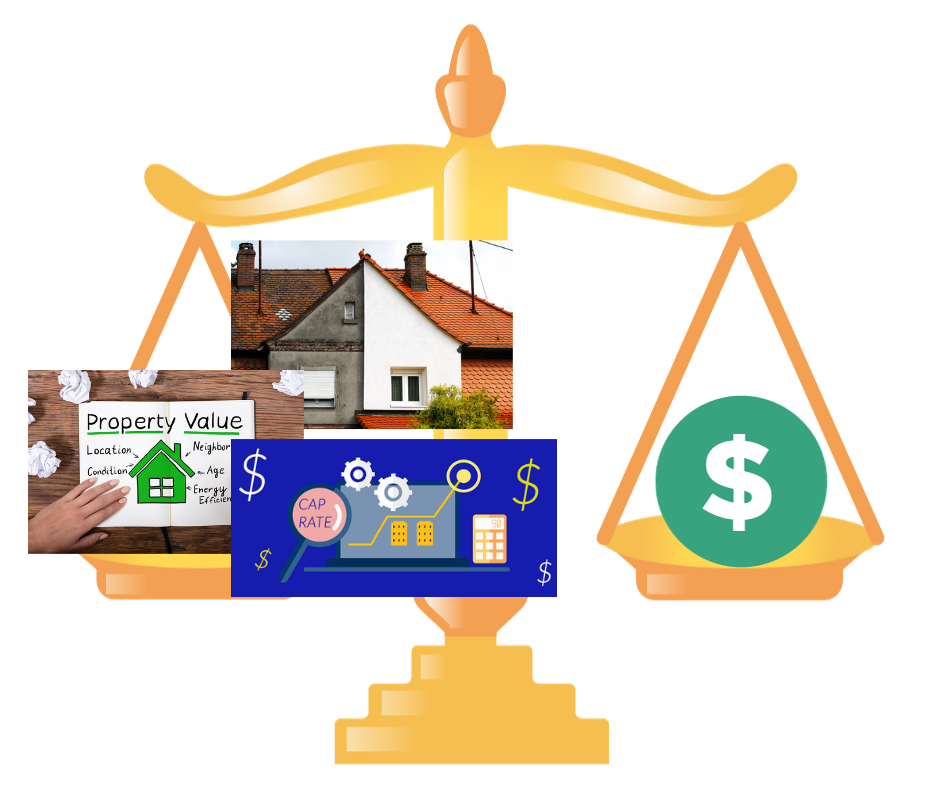When you venture into the world of multifamily real estate investments, it's essential to understand the key elements that contribute to a property's value and potential for financial success. Site value, the combination of the site and the physical buildings (often referred to as "bricks and mortar"), and the capitalization rate (cap rate) are three crucial factors in this evaluation. Let's break down each of these components to gain a deeper understanding of their significance.
1. Site Value:
The old adage "location, location, location" holds true in real estate, and it begins with site value. The value of the land and its location plays a pivotal role in determining the worth of a multifamily property. Here's why it's so important:
-
Neighborhood and Amenities: The neighborhood in which the property is situated greatly influences its desirability and, consequently, its market value. Proximity to amenities like schools, parks, shopping centers, and public transportation can make a location more attractive to potential tenants.
-
Future Development Potential: The potential for future development or growth in the surrounding area can significantly impact the long-term value of a multifamily property. Areas with planned infrastructure improvements or increasing demand for housing can make your investment more promising.
2. Site + Bricks and Mortar:
In addition to site value, the quality and condition of the physical buildings on the property are vital factors that impact its overall worth:
-
Condition and Quality: The state of repair and the quality of construction materials used in the buildings can greatly influence their value. Well-maintained properties with modern amenities tend to command higher rental rates and attract more tenants.
-
Age and Renovations: The age of the buildings is a critical consideration. Older structures may require more maintenance and updates, while recent renovations can breathe new life into a property and make it more competitive in the rental market.
3. Cap Rate (Capitalization Rate):
The cap rate is a financial metric that assesses the potential return on investment for a multifamily property. It considers the property's income and operating expenses:
-
Income: This includes the revenue generated from rental income and any other sources, like laundry facilities or parking spaces. A higher rental income typically leads to a higher property value.
-
Operating Expenses: These are the costs associated with running the property, such as property management, maintenance, insurance, and property taxes. Lower operating expenses can improve the cap rate and property value.
-
Investor's Lens: The cap rate provides investors with a snapshot of how profitable an investment might be. A lower cap rate suggests a potentially better return on investment, assuming other factors remain stable.
Understanding the relative importance of these factors can vary based on the property, market conditions, and your investment objectives. In a seller's market with high rental demand, a lower cap rate might indicate a more valuable property. In a buyer's market with ample inventory, site value and the condition of the property may take precedence.
Ultimately, a well-rounded evaluation of a multifamily investment considers all these factors together. Striking the right balance between site value, bricks and mortar, and cap rate is crucial in making sound investment decisions and achieving your financial goals in the world of multifamily real estate.
This resources can guide you on where to find information and studies that support the importance of the factors in valuing a multifamily investment.
-
National Multifamily Housing Council (NMHC): The NMHC is a great resource for multifamily research. They often publish reports and studies related to multifamily real estate. Check their website or publications for research on factors influencing multifamily property valuation.
-
Real Estate Investment Journals: Academic journals in real estate and property valuation often feature research articles on this topic. You can access journals like the "Journal of Real Estate Finance and Economics" or "Real Estate Economics" through university libraries or online research databases.
-
Real Estate Investment Books: Many books by real estate experts delve into the factors affecting multifamily property valuation. Look for books by renowned real estate authors such as David M. Geltner, Peter Linneman, or John A. Kilpatrick.
-
Real Estate Investment Websites: Websites dedicated to real estate investment, such as BiggerPockets and Investopedia, often feature articles and resources that discuss the importance of factors like location, property condition, and cap rates in valuing multifamily investments.
When researching, it's essential to combine insights from multiple sources to gain a well-rounded understanding of multifamily property valuation. Academic studies, industry publications, and real estate experts' insights can all contribute to your knowledge on this subject.

